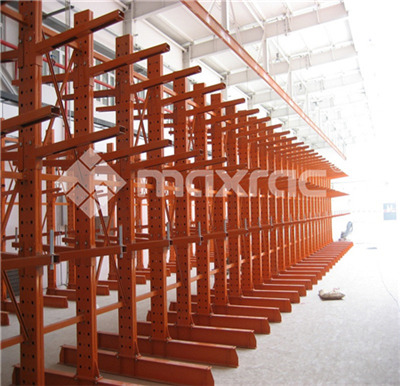What is the difference between pallet racking and shelving?
In the fast-paced world of logistics and warehousing, it's crucial to optimize storage space and improve efficiency. Two commonly used methods for achieving this are pallet racking and shelving. Although they serve the same purpose, there are distinct differences between the two. In this article, we will explore the characteristics, benefits, and applications of pallet racking and shelving, providing you with a comprehensive understanding of each.
I. Understanding Pallet Racking
Pallet racking is a versatile and efficient storage system designed to store large quantities of palletized goods. It involves the use of specialized racks that can accommodate pallets of varying sizes, making it ideal for warehouses and distribution centers with high-volume inventory requirements.
A. Types of Pallet Racking Systems
Selective Pallet Racking: This is the most common type of pallet racking system. It allows direct access to every pallet, maximizing accessibility and flexibility. Selective pallet racking is suitable for operations with a wide range of SKUs and quick turnover rates.
Drive-In Pallet Racking: Drive-in racking is designed for high-density storage, where the focus is on maximizing storage capacity rather than individual SKU accessibility. It uses a system of lanes and allows forklifts to drive directly into the rack structure to load and retrieve pallets.
Push Back Pallet Racking: Push back racking offers higher storage density compared to selective racking while maintaining selectivity. Pallets are loaded from one side, and when a new pallet is added, it pushes the previously loaded pallet back. This system is ideal for storing perishable or time-sensitive goods.
B. Advantages of Pallet Racking
Optimized Space Utilization: Pallet racking systems make efficient use of vertical space, allowing you to maximize your warehouse capacity.
Enhanced Accessibility: Selective pallet racking provides direct access to each pallet, enabling faster loading and unloading times.
Flexibility: With the ability to handle various pallet sizes and configurations, pallet racking adapts to the evolving needs of your business.
Improved Inventory Management: By organizing products on pallets, inventory tracking becomes more accurate and efficient.
II. Exploring Shelving Systems
Shelving systems, also known as storage shelves or racks, are widely used across various industries to store smaller items or goods that don't require palletization. Shelving is ideal for warehouses, offices, retail stores, and even residential spaces.
A. Types of Shelving Systems
Boltless Rivet Shelving: This type of shelving system is known for its easy assembly and versatility. It utilizes metal uprights, beams, and shelves that can be adjusted to accommodate different heights and sizes of products.
Wire Shelving: Wire shelving consists of wire mesh shelves supported by metal posts. It provides excellent visibility and airflow, making it suitable for storing items that require ventilation or visibility.
Mobile Shelving: Mobile shelving systems offer high-density storage by eliminating the need for multiple aisles. The shelves are mounted on carriages that move along tracks, allowing you to access stored items by creating an open aisle.
B. Advantages of Shelving Systems
Customizable: Shelving systems offer flexibility in terms of size, height, and configuration, allowing you to adapt to changing storage needs.
Easy Organization: With shelving, it's easier to categorize and arrange smaller items, enhancing inventory management and retrieval.
Space Efficiency: Shelving systems optimize floor space and are particularly suitable for areas with limited room.
Accessibility: Open shelving provides quick and direct access to stored items, making them highly efficient for small-scale operations.
III. Choosing the Right Storage Solution
Deciding between pallet racking and shelving depends on several factors, including the type of goods, inventory turnover, available space, and budget. Consider the following points when making your decision:
Type of Goods: Evaluate whether your inventory consists of palletized items or smaller products that can be stored on shelves.
Storage Density: Determine whether maximizing storage capacity or quick accessibility is your primary requirement.
Warehouse Space: Assess the available floor space and ceiling height to select a system that optimizes the area effectively.
Inventory Turnover: If you have high inventory turnover, selective pallet racking might be the most suitable choice for efficient loading and unloading.
Budget: Consider the financial aspect and choose a storage solution that aligns with your budget constraints.
Remember, each business has unique requirements, so it's essential to analyze your specific needs and consult with industry experts to determine the best storage system for your operation.
Conclusion
In the world of logistics and warehousing, optimizing storage space is crucial for efficient operations. Pallet racking and shelving systems offer practical solutions to address different storage needs. Pallet racking excels in accommodating large quantities of palletized goods, while shelving systems are ideal for smaller items or spaces with limited floor area. By understanding the differences between these two storage methods, you can make an informed decision that aligns with your business requirements.


Comments
0